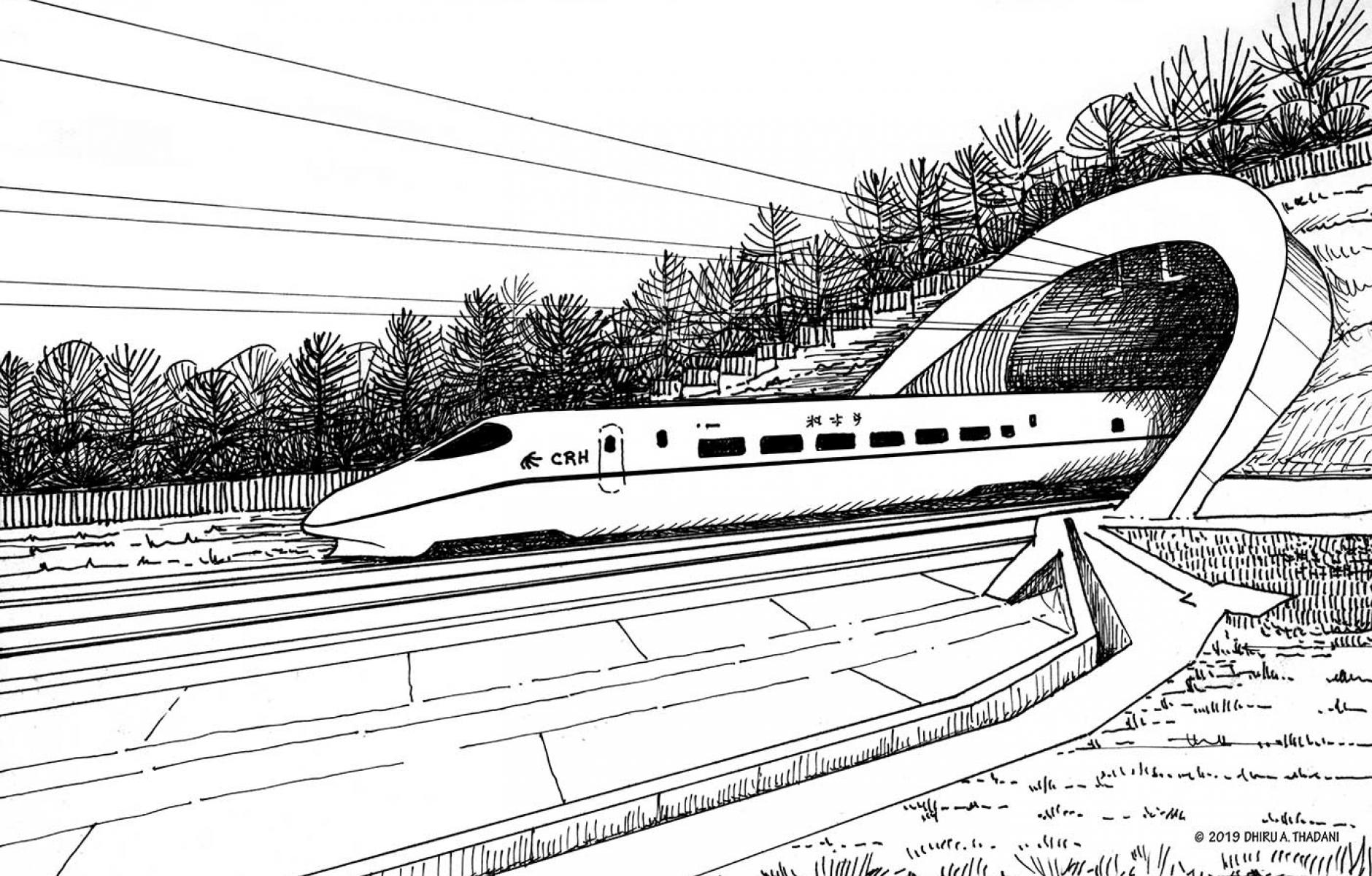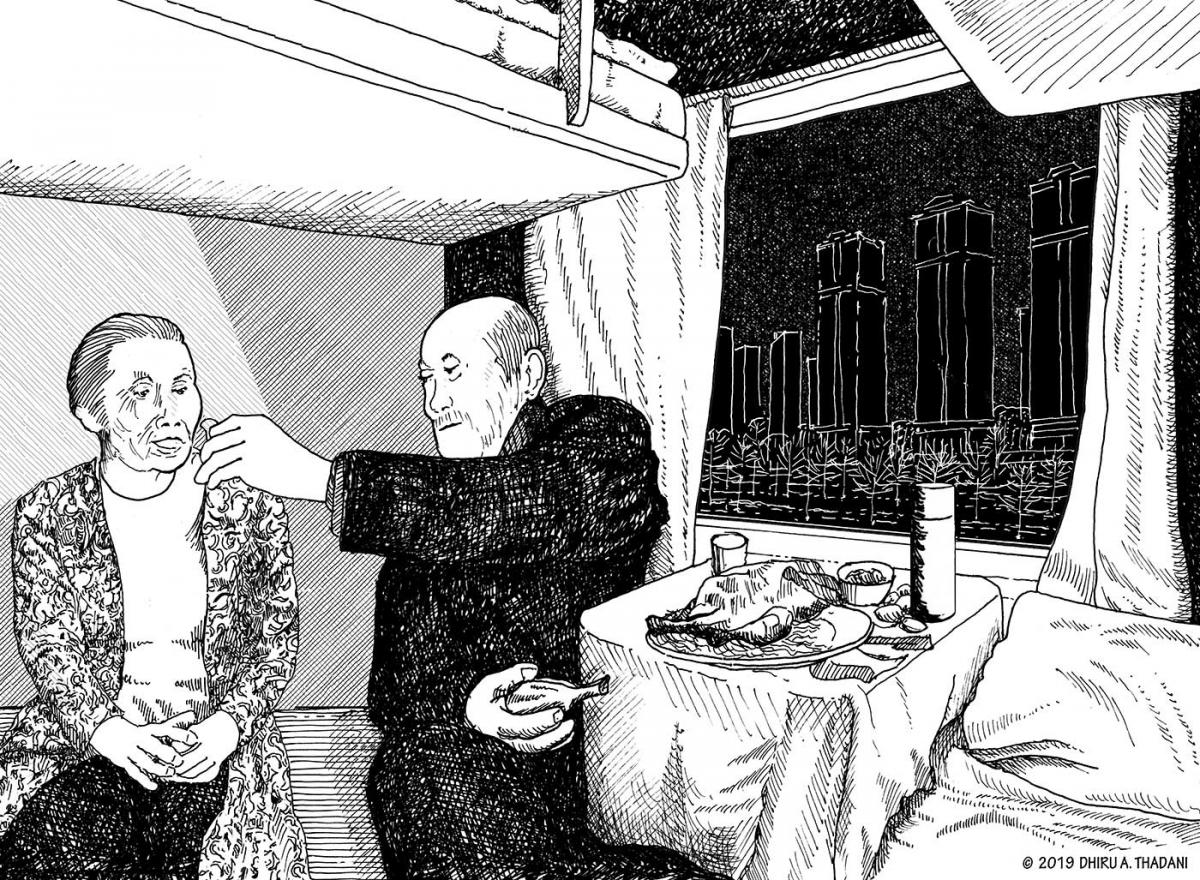
Urban adventure: Train travel in China
The bumper sticker “Practice Random Acts of Kindness” is easily read but too rarely practiced. Yet, on a trip in China I was unexpectedly the recipient of just such an act. I had been frequently traveling to Nanjing for work, taking a nonstop flight to Beijing from Washington, DC, and a connecting flight on to China’s former capital city. However, on several occasions my late afternoon flight from Beijing to Nanjing would be canceled due to “poor weather conditions.” Although this was the official announcement, everyone knew it was actually an indication that severe air pollution in and around Beijing was hampering pilots’ visibility, hence shutting down air travel. This is the price citizens frequently pay for their country’s dependence on fossil fuel for electricity generation.
After a few such cancellations and hopeless efforts to pry refunds from China Air, I gave up on connecting flights and yielded to a more reliable form of travel, high speed rail. The only drawback with this decision was the distance between the airport and train station. It was a three-hour bus ride or one-hour by taxi, and there was no subway option—an unfortunate disruption in Beijing’s robust city-wide transit system. My hypothesis is that demands to build a more ambitious transportation infrastructure often means implementation is achieved through the path of least resistance—on land that is easily available but not ideally located. How can major capital cities, such as Beijing and Washington, not have their primary transportation hubs connected by transit?
On one work-related expedition, I was traveling from Beijing to Nanjing on Sunday evening. Arriving at the station I learned that all the high speed trains, departing every hour and each with sixteen passenger cars accommodating over 1,300 passengers, were fully booked. Living in the United States, it is hard to imagine that level of demand for high speed rail service and a system that carries over 1.5 billion passengers annually. Under pressure to reach my destination, I settled for the slower option, the overnight sleeper train.
On entering the four-person sleeping compartment, I was welcomed by a courteous elderly couple Jian and Ying. My roommates and I could not speak each other’s language, so we communicated with polite nods, hand gestures, and big smiles. Their booking was for one side of the compartment, with Jian, the husband, taking the lower berth and Ying the upper. I had the lower berth on the opposite side, and the one above was empty.

Leaving Beijing the view from the window is monotonous—residential high-rise towers ad infinitum. Building new housing across the country has been an important objective of the Chinese government, to promote economic development. The migration and dramatic improvement in the living conditions of the Chinese people, from substandard rural housing to middle-class urban dwellings, has been phenomenal. Lucrative incentives are offered to developers and construction companies, to spur property development. Supply is now surpassing the number of people who can purchase these newly built apartments, leaving many structures vacant. On closer review these residential mono-cultures are devoid of placemaking and civic landmarks, and they devote little space to recreational uses.
As the train started to pick up speed, and settle into its rhythmic motion, Jian opened a thin plastic shopping bag and unveiled a large roasted duck. Since there was no cutlery, he washed his hands with a wet wipe, and proceeded to carefully tear pieces of duck with his fingers, and feed his poised wife. Without hesitation he offered me a portion of breast meat which he had extracted from the carcass. There was no asking, just the kind assumption that I was welcome to share their meal.
When there was nothing left but bones, we drank hot jasmine tea from their thermos, and Ying proceeded to clean the table. When finished, there was not a trace of our scrumptious meal. Jian left the compartment to change into his night-suit and Ying proceeded to make his bed with the all-white bed mattress, sheets, pillow, and down cover provided. When Jian returned, she gestured me to get up and I left the cabin. I presumed that she wanted privacy to change. On my return, I was surprised to find that Ying had neatly made my bed. I thanked her and we all turned in for the evening. On arrival in Nanjing we parted as friends who had bonded over a meal, bidding each other farewell and going our separate ways.
My client, the planning director of Nanjing who greeted me on my arrival, has always introduced me to his friends and government colleagues with obvious pride. He would regularly mention that I too was from an ancient culture similar to China’s, that we had a lot in common, and our two cultures shared knowledge and experience from the distant past.
On these sojourns to China, I could not help but recall that my home country of India had engaged in two wars with China during my childhood in the 1960s. The propaganda from these wars had left an irrational prejudice against China and the Chinese people. Insulting slang references can still be heard on the streets of small towns in India when a non-Indian Asian is in sight. Yet some of my most endearing urban experiences have occurred in China. As someone once said, travel is the best cure for racism and prejudice—and reading the best cure for ignorance.




